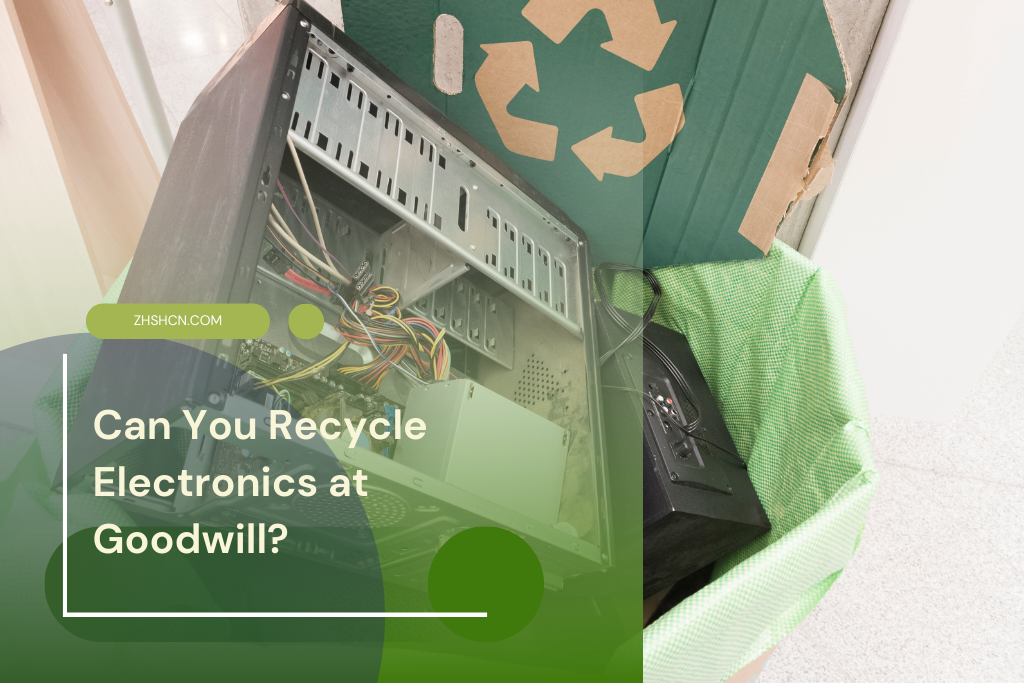Understanding the Importance of Recycling Electronics
In this era of relentless technological advancement, we exist under the rule of electronics. Yet, how often do we pause to ponder upon the fate of these devices once they’ve exhausted their lifecycle? Electronic waste – or e-waste as it’s colloquially known – is a rapidly escalating issue in our civilization that necessitates immediate attention and understanding, particularly with regards to its recycling.
E-waste encompasses an array of items such as computers, televisions, cellphones and other assorted paraphernalia that have surpassed their effective lifespan. When these discarded products are subjected to metal detection before being erroneously dumped into landfills, perilous substances like lead, mercury and cadmium may seep into the soil or infiltrate groundwater resources. This inadvertent invasion can deliver a crippling blow to both environmental balance and human health at individual and communal levels.
The unfolding narrative of the digital revolution’s second act relies heavily on adept management of e-waste. On one hand electronic device manufacturers grapple with creating merchandise ticking all boxes- functionality for consumers coupled with eco-friendliness. Ensuring maximum recycling from existing electronics emerges as a vital component in this conundrum.
Electronics recycling serves multiple ends – it curbs the need for fresh raw material extraction thereby reducing ecological disruption; it also aids in minimizing pollution levels. Further benefits include conservation of invaluable materials which help limit greenhouse gas emissions responsible for global climate change acceleration. The economic impact cannot be overlooked either considering job creation opportunities in manufacturing industries linked to recycling practices.
Moreover, many discarded electronics hide treasure troves within them: valuable metals like cooper gold silver await recovery reuse production new products hence amalgamates environmental protection resource conservation offering promise cleaner healthier sustainable world future generations come.\n
Goodwill’s Role in the World of Recycling
Unquestionably, Goodwill stands tall as a colossal non-profit organization globally, wielding an extensive and formidable strategy towards recycling – more so in the realm of electronic waste. It’s undeniable role in the recycling universe provides a secure and amiable avenue for discarding unwanted electronics – thus playing a pivotal part in bolstering environmental sustainability. This fervent initiative robustly backs up worldwide efforts to trim down electronic waste while simultaneously reducing potential adverse effects caused by improperly discarded electronic parts on our precious planet.
Speaking about its modus operandi, Goodwill’s holistic approach to recycling encompasses an array of electronic devices; from mobile phones and computers to televisions and printers – they accept them all. Such wide-ranging acceptance of diverse e-devices invariably contributes towards shrinking e-waste piles at landfills significantly. Moreover, their unwavering dedication to safe disposal practices shines through strict adherence to environmental regulations ensuring that non-recyclable elements don’t exacerbate environmental degradation further. Their alliances with conscientious recyclers reinforce their commitment not just towards social responsibility but also achieving ecological balance goals.
The Process of Electronic Waste Management at Goodwill
Goodwill stands as a sturdy bulwark in the contest against electronic waste, driven by their vigorous electronics recycling program. The machinery of this process is set into motion with the influx of donations at Goodwill centers or allied locations scattered across the country’s breadth. As these electronics make their entry, they are classified based on their type and condition in an inaugural sorting phase.
Electronics that still boast full functionality find themselves resold either within Goodwill stores or online. This ensures they embark on another lifespan, continuing to be useful for users while simultaneously curbing the need for newer devices and thereby putting a check on e-waste generation.
Yet not all contributions arrive in serviceable conditions or sometimes might even be considered obsolete. These particular electronics traverse an alternate workflow pipeline within Goodwill’s infrastructural system where disassembly awaits them. This operation calls for painstaking precision and professional competence since electronic devices typically harbor diverse materials – ranging from valuable ones to potentially damaging elements.
The disassembly procedure encompasses segregating and reaping precious metals such as gold, silver, and palladium while concurrently ensuring hazardous substances like lead and mercury are meticulously extracted before being prepared for safe disposal procedures. All these actions transpire under unyielding observance of both local Goodwill regulations along with international safety standards advocating environmental sustainability.
Types of Electronics Accepted by Goodwill for Recycling
As the ceaseless tide of consumer technology advancement washes ashore newer models of electronic gadgets, it leaves in its wake a mounting challenge – the disposal of their older counterparts. This growing mass breeds an extensive ecology of e-waste that threatens our environment. Yet amidst this rising current, entities such as Goodwill Industries have emerged to stem the tide, acting as vital lifelines in orchestrating effective and responsible management strategies for e-waste.
In response to this pervasive issue, Goodwill unfurls a comprehensive spectrum of recycling programs. These initiatives warmly embrace a diverse array of electronics for donation; ensuring they are either rehoused or responsibly recycled adhering to stringent environmental and safety standards.
The realm of computing equipment is wide open – desktop computers, laptops, tablets and e-readers find themselves welcome alongside peripherals like keyboards, mice and hard drives. The communication device category also extends an invitation to smartphones, feature phones and answering machines. Devices designed for entertainment aren’t left out in the cold either; televisions join hands with DVD players while video game consoles rub shoulders with stereo systems within Goodwill’s encompassing arms.
Moreover, even small home appliances can sidestep the landfill route through donation; microwaves cozy up next to coffee makers while toasters share space with petite AC units under Goodwill’s ever-expanding umbrella.
Continuing on, Goodwill’s recycling programs also accommodate a broad spectrum of office electronics. From printers and scanners to fax machines and shredders, these devices find a new lease on life through donation rather than ending up as e-waste in landfills. In addition, tech accessories like cables, chargers, routers and modems are accepted for safe disposal or reuse.
In summary, the variety of electronic items that Goodwill accepts for recycling includes but is not limited to:
• Desktop computers
• Laptops
• Tablets
• E-readers
• Keyboards
• Mice
• Hard drives
• Smartphones
• Feature phones
• Answering machines
• Televisions
• DVD players
• Video game consoles
• Stereo systems
• Microwaves
• Coffee makers
• Toasters
• Small AC units
• Printers
• Scanners
• Fax machines
• Shredders
• Cables
• Chargers
• Routers
• Modems
By accepting such an extensive range of electronics for recycling or repurposing, Goodwill Industries plays an instrumental role in mitigating the environmental impact of e-waste. It offers consumers an easy and responsible way to dispose off their old gadgets while contributing towards sustainability efforts globally.
How Goodwill Ensures Safe Disposal of Non-Recyclable Electronic Components
Goodwill, a vanguard in the realm of sustainable electronic waste (e-waste) management, adopts an intricate web of measures to ensure the secure disposal of non-recyclable components. Deeply intertwined with eco-friendly methods that push against recycling challenges posed by certain materials or designs, this organization stands tall against traditional e-waste disposal techniques.
Its practices are woven within stringent local and international environmental standards – a complex pattern aimed at curbing landfill wastes and diminishing our ecological footprint. The safety net around such non-recyclable parts is spun through a meticulous process monitored with hawkish eyes.
The initial wave sees donated electronics being sifted into recyclable and non-recyclable categories – like sand passing through a sieve. This categorization sets off ripples leading to the careful disassembly of these stubborn parts in a calculated cascade down to their bare elements.
Harmful substances dwelling within these components like lead or mercury are pinpointed amidst this chaos and extracted securely – akin to finding needles in haystacks under moonlight. These toxic elements are then treated using environmentally safe methods in specially built sanctuaries; creating eddies intended to shield both Mother Nature and public health from potential harm.

The Environmental Impact of Donating Electronics to Goodwill
The act of bequeathing your antiquated gadgets to Goodwill, a move that may appear deceptively uncomplicated, carries with it deep-seated implications for our environment. These forsaken electronic relics, known as e-waste, pose monumental hurdles when it comes to safe disposal due to the lethal cocktail of chemicals they house within: mercury, lead and cadmium among others.
In the face of an ever-accelerating global deluge of discarded electronics, Goodwill emerges as a beacon amidst this storm; offering a safer alternative pathway through which we can address our burgeoning e-waste conundrum – one that ensures secure handling and eradication thereby curtailing potential deleterious effects on our natural surroundings.
An alarming figure exceeding 50 million tons of such electronic refuse is amassed globally every year leading us down a road riddled with grave environmental repercussions. Reckless disposal methods result in these harmful substances infiltrating the earth’s crust and polluting our water reserves causing widespread health concerns.
Goodwill’s avant-garde electronic recycling initiatives come into play here working tirelessly towards preventing mountains of e-waste from finding their way into landfills. Each singular piece gifted to Goodwill translates directly into diminished levels toxic waste – paving the path towards healthier environments, conservation of precious resources and shielding ecosystems by curbing pollution levels.
Therefore, this seemingly insignificant gesture holds immense promise; contributing significantly towards sweeping environmental goals – taming down the escalating global crisis surrounding e-waste.\n
Goodwill’s Partnerships and Certifications in E-Waste Recycling
In the labyrinthine landscape of electronic trash recycling, Goodwill has ingeniously forged crucial alliances with a plethora of groups and organizations. These tactical affiliations act to fortify Goodwill’s recycling crusades, radically accelerating the proficiency of e-waste administration. A collaboration that commands attention is that with Dell Reconnect program; a venture laser-focused on residential electronic refuse. This alliance furnishes an appropriate conduit for the disposal and repurposing of used electronics, engaging over 2,000 Goodwill locations in this noble enterprise.
Venturing into certifications territory reveals substantial strides made by Goodwill to uphold utmost compliance with environmental stipulations. Such adherence is realized through a flurry of sustainability certifications endorsed by esteemed entities. Amongst these commendable achievements sits the R2 (Responsible Recycling) certification – an accolade internationally acclaimed in electronics recycling circles. The attainment of R2 certification not only catapults Goodwill’s commitment to best practices in e-waste management into prominence but also testifies their unwavering resolve towards curbing environmental hazards linked with electronic waste.
How to Prepare Your Electronics for Donation to Goodwill
As you contemplate gifting your electronic devices to Goodwill, a labyrinth of preparation awaits. From the tiniest handheld gadgets to gargantuan household appliances, each one harbors its own set of hurdles that demand meticulous attention and an apt strategy. The specter of data privacy looms large – numerous electronics harbor personal or confidential information. To barricade your data from prying eyes during the donation procedure, it is imperative to scrub clean all traces of personal data off the device. This may entail reverting back to factory settings or in certain scenarios, extracting the memory storage element altogether.
Moreover, additional groundwork includes scrutinizing the physical state of your electronic contraption. Goodwill welcomes a plethora of digital items regardless if they are operational or defunct. Nevertheless, any segments bearing severe damage or posing potential danger must be discarded in alignment with local environmental guidelines. Should there be auxiliary components accompanying your device like remotes do ensure their inclusion in your contribution as well. Arrange cables and other peripheral equipment neatly together; this will facilitate easy assessment once they arrive at Goodwill’s recycling hub. Bear in mind; every bit of e-waste that you donate conscientiously contributes meaningfully towards fostering a sustainable future.
Impact on Communities: Goodwill’s Electronic Recycling Programs
In the sphere of electronics recycling, Goodwill’s endeavors are undeniably a force of profound influence within their served communities. The organization, steadfast in its commitment to waste reduction and simultaneous creation of job opportunities, has brilliantly straddled the divide between environmental responsibility and economic growth. Their e-waste recycling drive goes beyond mere safe disposal and repurposing of electronic devices; it is a portal for community members to acquire new skills and gain employment.
Goodwill’s programs transcend ordinary boundaries of waste management in the field of electronics recycling. They possess a transformative potential that resonates on social and economic planes alike. Electronics donated to Goodwill undergo an intricate process of refurbishment at their facilities – offering not just jobs but also training in areas such as refurbishment techniques, customer service acumen, and inventory control mastery. This ingenious integration of recycling with workforce development serves both an ecological objective while simultaneously alleviating unemployment levels – a twofold accomplishment that enriches communal life from all angles.
Future Developments in Goodwill’s Electronics Recycling Initiatives
In the ceaselessly evolving digital epoch, Goodwill Industries ceaselessly emboldens its electronics recycling ventures via inventive stratagems and alliances. The task of managing electronic waste or ‘e-waste’ has burgeoned into a concern of vast proportions for an array of reasons, but principally due to the imperative need to safeguard our environment’s vitality.
Standing proudly among the vanguard in this field, Goodwill is crafting future schemes that encompass increasing both variety and volume of accepted electronics, refining their recycling methodologies for heightened efficiency, and forging fresh alliances to magnify their influence and repercussion.
A development worth mentioning that’s uncoiling in the pipeline pertains to embracing Artificial Intelligence (AI) along with automation for classifying and disassembling electronics. Although human effort has been invaluable in Goodwill’s recycling maneuvers thus far, amalgamating AI will hoist efficiency onto an unprecedented pedestal. This allows the organization to grapple with a significantly larger quantum of e-waste.
Additionally, explorative dialogues are ongoing between Goodwill and tech corporations regarding collaborations aimed at reprocessing or reutilizing certain substances like precious metals residing within e-waste. This avant-garde methodology not only attenuates environmental repercussions but also unveils economic potential embedded within entities previously classified as mere waste.

Why should one consider the recycling of electronics as imperative?
The act of recycling electronics is a paramount endeavor to safeguard our natural resources, enhance energy efficiency, and curb pollution. Electronics notoriously harbor detrimental substances like lead, mercury, and cadmium; their improper disposal poses a significant risk to environmental health.
How does Goodwill contribute to electronic recycling efforts?
Goodwill serves an essential function in the sphere of electronic recycling by welcoming donations of pre-owned electronics. Where feasible, these items are refurbished; when they have outlived their usefulness, responsible recycling measures are employed.
Can you describe how Goodwill addresses e-waste management?
A systematic methodology governs Goodwill’s approach towards managing electronic waste that comprises collection and segregation of donated electronics followed by condition assessment. Functioning items undergo refurbishment for resale while non-functioning ones get disposed off strictly adhering to environmental regulations.
What variety of electronics can be recycled at Goodwill facilities?
An extensive array of electronics is accepted by Goodwill for its recycling program encompassing computers, printers, televisions alongside stereos phones and other such devices.
Could you elaborate on how non-recyclable components’ safe disposal is ensured at Goodwill?
To ensure the secure disposal of non-recyclable electronic elements, certified recyclers collaborate with goodwill who maintain stringent safety standards and abide by environment-friendly norms thereby averting harm to both environment and human health.
What environmental impact results from donating used technology products to goodwill’s programs?
By making contributions in form of used tech-products helps cut down e-waste destined for landfills contributing positively toward resource conservation efforts besides reducing demand for fresh production which also helps lower energy consumption levels along with greenhouse emissions.
Who exactly are goodwill’s collaborators in terms e-waste handling & disposing operations ?
Goodwill cooperates with several certified electronic waste recyclers to guarantee responsible handling and disposal of e-waste. However, the specifics pertaining to these collaborations may vary as per geographical location.
How should I ready my electronics for goodwill’s donation drive ?
Prior to making your contribution in form of used electronics , make sure that you wipe clean all personal data from your device which can generally be done via a factory reset or employing a data wiping tool.
What does Goodwill’s e-recycling program mean for local communities?
Goodwill’s e-recycling endeavors equip communities with access to economical refurbished gadgets while also creating job openings and furnishing employment training opportunities.
Is there any future roadmap laid out for the expansion of Goodwill’s electronic recycling initiatives?
Even though concrete plans might differ based on region, Goodwill consistently strives towards augmenting its electronics recycling programs by forging new partnerships and refining existing processes thereby ensuring safe and accountable recycling of electronic items.
